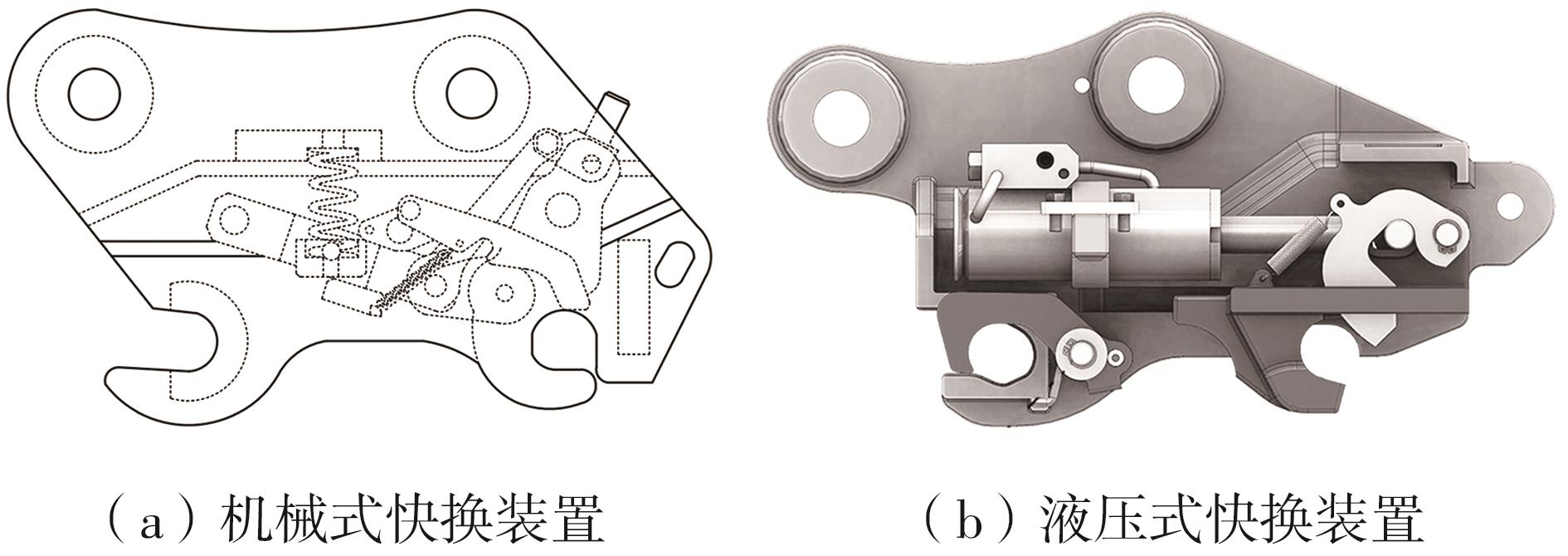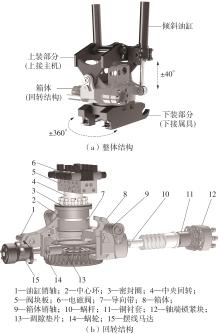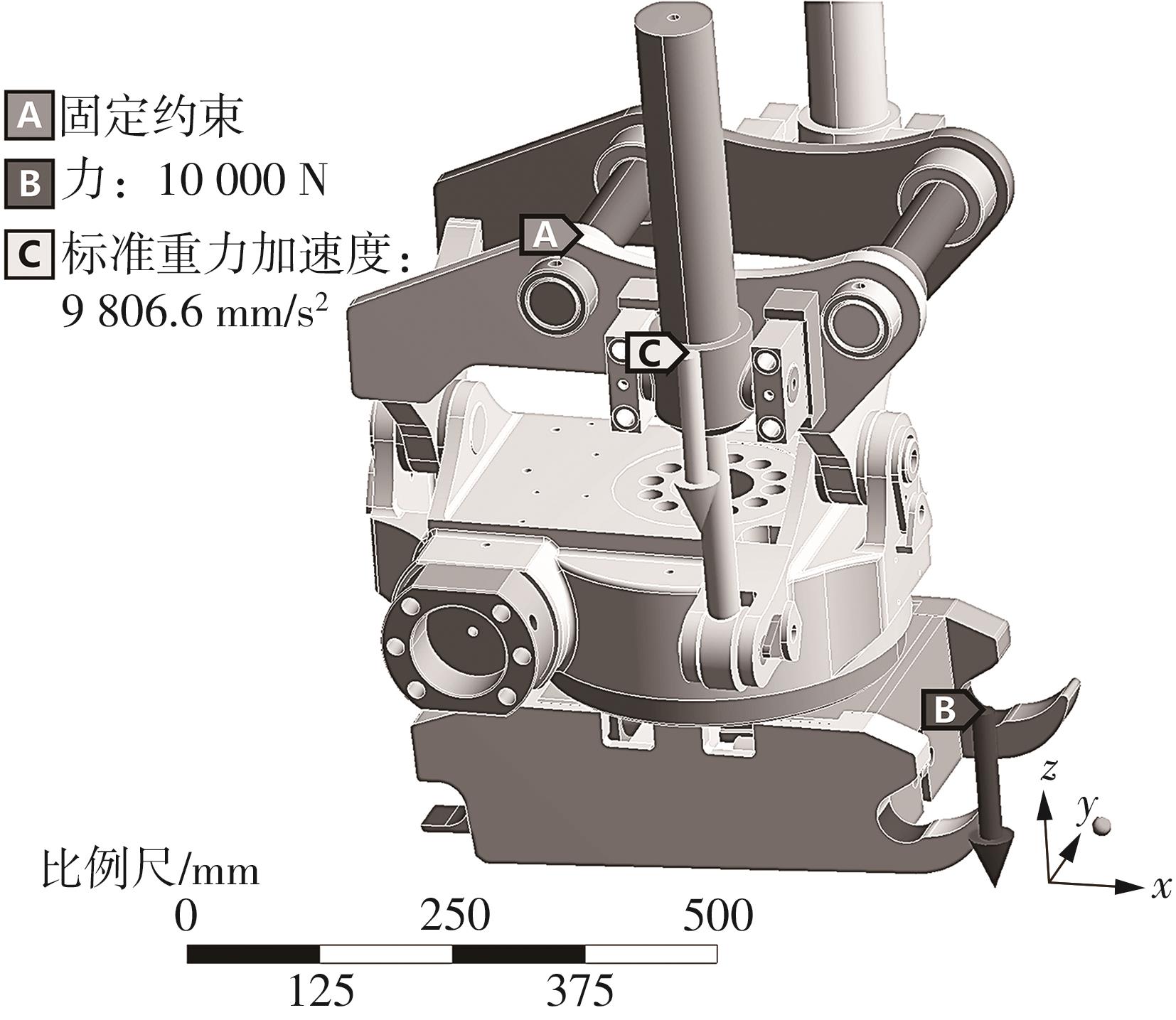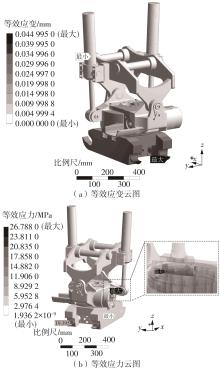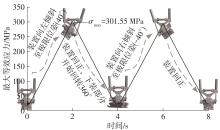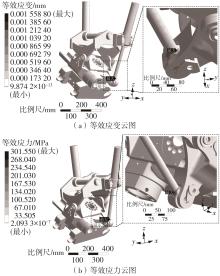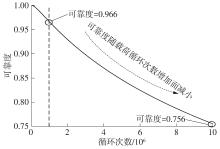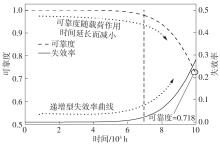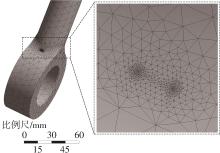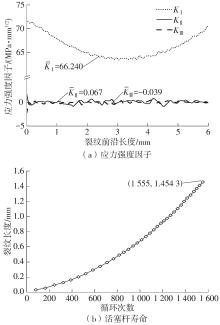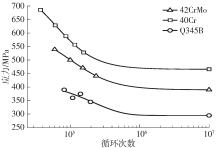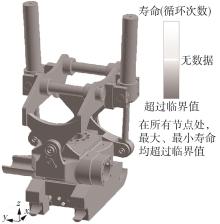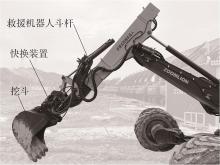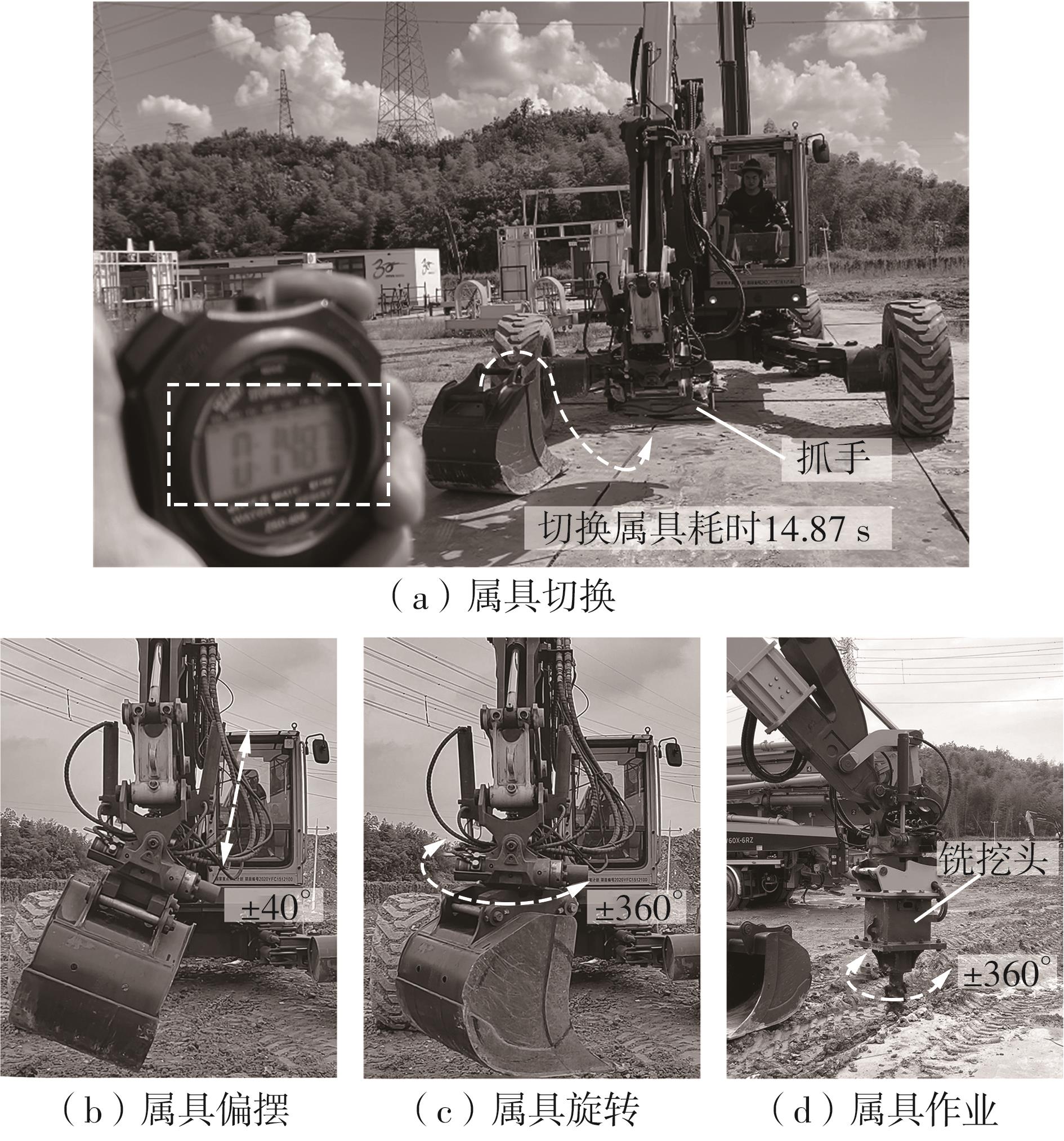Journal of South China University of Technology(Natural Science Edition) ›› 2025, Vol. 53 ›› Issue (5): 11-19.doi: 10.12141/j.issn.1000-565X.240408
• Mechanical Engineering • Previous Articles Next Articles
A Quick Coupling Device with Free Posture Adjustment Used for Emergency Rescue Robot Attachments
LI Wei1, LIU Jiachen1, ZHANG Weiyuan1, HUANG Rihong2, BAI Jing3, JIANG Chao1
- 1.College of Mechanical and Vehicle Engineering,Hunan University,Changsha 410082,Hunan,China
2.Teaching and Research Office,A Certain Unit of the PLA,Guangzhou 510000,Guangdong,China
3.Zoomlion Heavy Industry Science and Technology Co. ,Ltd. ,Changsha 410013,Hunan,China
-
Received:2024-08-19Online:2025-05-25Published:2024-11-01 -
About author:李伟(1983—),男,博士,教授,主要从事复杂装备智能化集成设计、智能加工制造研究。E-mail: liwei@hnu.edu.cn -
Supported by:the National Key Research and Development Program of China(2020YFC1512103)
CLC Number:
Cite this article
LI Wei, LIU Jiachen, ZHANG Weiyuan, HUANG Rihong, BAI Jing, JIANG Chao. A Quick Coupling Device with Free Posture Adjustment Used for Emergency Rescue Robot Attachments[J]. Journal of South China University of Technology(Natural Science Edition), 2025, 53(5): 11-19.
share this article
| 1 | 董炳艳,赵自强,徐兰军,等 .智能应急救援装备研究现状与发展趋势[J].机械工程学报,2020,56(11):1-25. |
| DONG Bingyan, ZHAO Ziqiang, XU Lanjun,et al .Research status and development trend of intelligent emergency rescue equipment[J].Journal of Mechanical Engineering,2020,56(11):1-25. | |
| 2 | 汤志东,贠超 .全自动快换装置快速接头技术综述[J].浙江大学学报(工学版),2017,51(3):461-470. |
| TANG Zhidong, YUN Chao .Quick action coupling technology in full-automatic quick coupling device: a review[J].Journal of Zhejiang University (Engineering Science),2017,51(3):461-470. | |
| 3 | 汤志东,贠超 .全自动快换装置精准对接技术[J].北京航空航天大学学报,2017,43(9):1859-1872. |
| TANG Zhidong, YUN Chao .Precise docking technology in full-automatic quick hitch coupling device[J].Journal of Beijing University Aeronautics and Astronautics,2017,43(9):1859-1872. | |
| 4 | MARCEL W, MARKUS L, HEIKO K .Device for conducting hydraulic fluid:US 17/289342[P].2021-09-08. |
| 5 | JONSSON A .Control systems for an excavator and methods for controlling an excavator with a movable excavator thumb and an auxiliary tool hold by an tiltrotator:US 16/606566[P].2021-04-01. |
| 6 | 杨淞麟,刘满禄,张俊俊,等 .核应急机器人末端工具快换装置的设计及分析[J].机械设计,2021,38(7):56-62. |
| YANG Song-lin, LIU Man-lu, ZHANG Jun-jun,et al .Design and analysis of the end-effector’s quick-change device for nuclear emergency-response robots[J].Journal of Machine Design,2021,38(7):56-62. | |
| 7 | 尚海兴 .全自动液压手腕设计研究[D].马鞍山:安徽工业大学,2021. |
| 8 | 李亮 .破拆机器人快捷液压手腕设计与仿真研究[D].马鞍山:安徽工业大学,2017. |
| 9 | WANG P, XIANG Q, KRÓLCZYK G,et al .Dynamic modeling of a hydraulic excavator stick by introducing multi-case synthesized load spectrum for bench fatigue test[J].Machines,2022,10(9):741/1-15. |
| 10 | CAO L, CAO L, GUO L,et al .Reliability estimation for drive axle of wheel loader under extreme small sample[J].Advances in Mechanical Engineering,2019,11(3):1-12. |
| 11 | 曹蕾蕾,郭城臣,王严,等 .基于实测数据的挖掘机工作装置疲劳寿命评估[J].华南理工大学学报(自然科学版),2021,49(8):122-128,139. |
| CAO Leilei, GUO Chengchen, WANG Yan,et al .Fatigue analysis of hydraulic excavator working device based on experiment data[J].Journal of South China University of Technology (Natural Science Edition),2021,49(8):122-128,139. | |
| 12 | 曹蕾蕾,王留涛,王严,等 .基于等效结构应力法的挖掘机工作装置疲劳寿命评估[J].华南理工大学学报(自然科学版),2022,50(8):62-70. |
| CAO Leilei, WANG Liutao, WANG Yan,et al .Fatigue life evaluation of excavator working device based on equivalent structural stress method[J].Journal of South China University of Technology (Natural Science Edition),2022,50(8):62-70. | |
| 13 | 《机械工程材料性能数据手册》编委会 .机械工程材料性能数据手册[M].北京:机械工业出版社,1995. |
| 14 | 赵少汴 .抗疲劳设计[M].北京:机械工业出版社,1994. |
| 15 | 闻邦椿 .机械设计手册:第6卷[M].6版.北京:机械工业出版社,2020. |
| [1] | WANG Xiaoming, LI Pengfei, WU Runhan, YANG Wenjie LI Chenxi. Study on Maintenance Strategy of Existing Concrete Bridge Considering Reinforcement Time Interval [J]. Journal of South China University of Technology(Natural Science Edition), 2025, 53(6): 34-43. |
| [2] | CHENG Jin, SUN Kedi, YUAN Yi. Deflection Reliability Assessment Method of Long-Span Suspension Bridge Based on Random Field [J]. Journal of South China University of Technology(Natural Science Edition), 2025, 53(4): 13-21. |
| [3] | ZHANG Chi, GUO Tingyu, HU Ruilai, GAO Yanyang, ZHOU Yuming. Research on Average Longitudinal Slope Length of Expressway Based on Braking Behavior [J]. Journal of South China University of Technology(Natural Science Edition), 2025, 53(2): 12-26. |
| [4] | SHANGGUAN Wenbin, YUE Lian, LÜ Hui, et al. Fatigue Test and Calculation Methods for Battery Package Based on Load Spectrum [J]. Journal of South China University of Technology(Natural Science Edition), 2024, 52(3): 50-56. |
| [5] | LI Min, YAO Qishui. Calculation of Fatigue Life of Rubber Vibration Isolators Under Random Vibration Loads [J]. Journal of South China University of Technology(Natural Science Edition), 2024, 52(12): 14-21. |
| [6] | HE Jiapeng, ZHANG Jinyu, CHEN Zhangxing, et al.. Mechanical Properties Degradation Under Fatigue Loading in Pultruded Unidirectional Glass Fiber Reinforced Polymer Composites [J]. Journal of South China University of Technology(Natural Science Edition), 2024, 52(1): 62-71. |
| [7] | DENG Manyu, YUAN Xingfei, DONG Yongcan. Study on Area-Loss Limit of Cable-Strut Structures Considering Different Failure Modes [J]. Journal of South China University of Technology(Natural Science Edition), 2024, 52(1): 52-61. |
| [8] | ZHAO Xiaomei, ZHU Xiangyuan, WANG Qin, et al. Operational Reliability Optimization Strategies of Multi-type Bus Lines [J]. Journal of South China University of Technology(Natural Science Edition), 2023, 51(8): 32-39. |
| [9] | CAO Leilei, WANG Liutao, WANG Yan, et al. Fatigue Life Evaluation of Excavator Working Device Based on Equivalent Structural Stress Method [J]. Journal of South China University of Technology(Natural Science Edition), 2022, 50(8): 62-70. |
| [10] | WANG Jinxiao, LI Sida, CHENG Bin, et al. Experimental Study on Fatigue Behavior of Adhesive & Bolted Hybrid FRP Joints [J]. Journal of South China University of Technology(Natural Science Edition), 2022, 50(11): 95-106. |
| [11] | CAO Leilei, GUO Chengchen, WANG Yan, et al. Fatigue Analysis of Hydraulic Excavator Working Device Based on Experiment Data [J]. Journal of South China University of Technology(Natural Science Edition), 2021, 49(8): 122-128,139. |
| [12] | JIANG Jihai DU Boran ZHANG Jian. Application and Technology Prospects of Hydrodynamic-Magnetic Compound Support for Axial Piston Pump [J]. Journal of South China University of Technology(Natural Science Edition), 2021, 49(2): 88-98,109. |
| [13] | WEN Huiying, LIN Yifeng, WU Haoshu, et al. Extended Co-evolutionary Algorithm for Path Planning Based on the Urban Traffic Environment Evolution [J]. Journal of South China University of Technology (Natural Science Edition), 2021, 49(10): 1-10. |
| [14] | WAN Yipin SONG Xuding YUAN Zhengwen. Fatigue Test and Fatigue Reliability Evaluation of Loader Working Device [J]. Journal of South China University of Technology (Natural Science Edition), 2020, 48(8): 108-114. |
| [15] | LIU Xiaoling, WANG Bing, HUANG Qiao, et al. Condition Assessment Model for Cable-Stayed Bridges Based on Evidence Reasoning Framework [J]. Journal of South China University of Technology (Natural Science Edition), 2020, 48(6): 69-76. |
| Viewed | ||||||
|
Full text |
|
|||||
|
Abstract |
|
|||||

